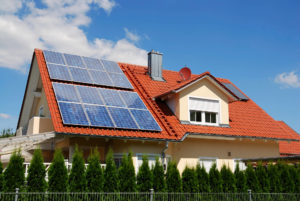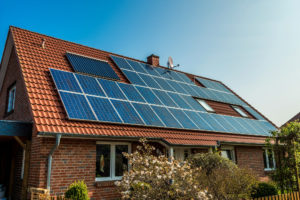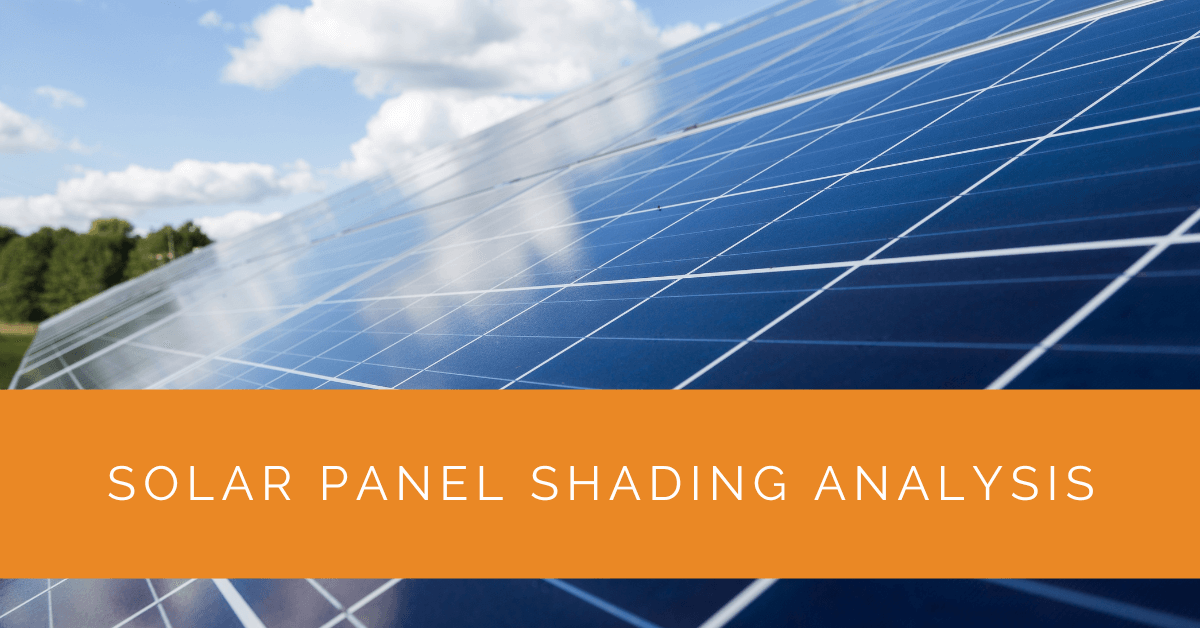Solar panels have revolutionized how we harness solar energy, providing clean and sustainable power for various applications. However, shading is one crucial factor that can significantly impact the performance of solar panels. In this article, we will delve into the world of solar panel shading analysis, exploring its implications and discovering techniques to maximize the efficiency of PV systems.
Contents
- 1 Key Takeaways
- 2 Understanding Solar Panel Shading
- 3 The Impact of Shading on Solar Panels
- 4 Importance of Accurate Shading Analysis
- 5 Techniques for Shading Analysis
- 6 Reducing Shading Impact in Solar Panel Installations
- 7 Case Study: Optimizing Solar Panel Placement Through Shading Analysis
- 8 Expert Insights From Our Solar Panel Installers About Solar Panel Shading Analysis
- 9 Experience Solar Excellence with Us!
- 10 Conclusion
- 11 FAQ
Key Takeaways
- Shading significantly impacts solar panel performance, leading to power loss, uneven current distribution, and reduced system efficiency.
- Accurate shading analysis during system design helps optimize solar panel placement, select shading-tolerant modules, and validate system performance predictions.
- Techniques such as tilt angle optimization, string-level power optimization, and intelligent panel-level optimization can effectively reduce shading impact, improving energy generation and maximizing the return on investment in solar PV systems.
Understanding Solar Panel Shading
The Concept of Shading in Solar Panels
Shading in solar panels occurs when an obstruction, such as a tree, building, or nearby structure, blocks sunlight from reaching the surface of the panels. This obstruction casts a shadow on one or more solar cells, affecting their ability to generate electricity. Understanding the concept of shading and its implications is important to effectively address its impact on solar panel performance.
Sources of Shading
Shading can originate from various sources, both natural and man-made. Trees are a common natural source of shading, especially when their branches or leaves cast shadows on the solar panels. Buildings or nearby structures can also cause shading, particularly during certain times of the day when the sun’s angle aligns with the structure. Identifying potential shading sources near a solar panel installation is essential to assess their impact accurately.
Shading Effects on Solar Panel Performance
When a solar panel is shaded, the affected cells receive reduced sunlight, decreasing their current output. Solar cells are typically interconnected in series within a module, meaning the underperforming shaded cells can significantly impact the overall output. This situation is commonly referred to as the “weakest link” phenomenon, where the performance of the entire module is limited by the shaded cells. Shading can also cause hotspots within the shaded cells, further reducing their energy conversion efficiency and potentially damaging the module.
The Impact of Shading on Solar Panels
Power Loss Due to Shading
Shading has a substantial impact on the power output of solar panels. Even partial shading on a single cell can significantly reduce the module’s overall performance. For example, if just one cell in a module is shaded, it can decrease the power output of that module by 20% or more. This reduction in output can have a cascading effect on the entire photovoltaic (PV) system, resulting in a considerable loss of energy generation.
Uneven Distribution of Current
Shading causes an uneven distribution of current within a solar panel. The shaded cells offer higher resistance than the unshaded cells, leading to an imbalance in the flow of electric current. This imbalance affects the overall efficiency of the module and reduces the power output. The mismatch in current can also result in overheating of the shaded cells, exacerbating the power loss and potentially causing long-term damage to the module.
Impact on System Performance and Economic Returns
The impact of shading is not limited to individual modules; it extends to the overall performance of the entire PV system. Shading reduces the system’s energy output, affecting the economic returns on the investment in solar panels. In large-scale solar installations, where multiple modules are interconnected, the power loss due to shading can be significant, resulting in substantial revenue loss over the system’s operational lifetime. Therefore, understanding and mitigating shading effects are critical to maximizing solar PV systems’ economic viability and long-term performance.

Importance of Accurate Shading Analysis
Optimizing Solar Panel Placement
Accurate shading analysis is vital in optimizing solar panel placement during the system design phase. By thoroughly evaluating the shading patterns throughout the year, installers and designers can determine the best locations for solar panels to minimize shading impact. This analysis considers factors such as the position of shading sources, the height and density of trees, nearby structures, and geographical variables like latitude and longitude. By strategically positioning the solar panels, maximizing their exposure to sunlight is possible, thereby increasing energy production and system efficiency.
Selecting Shading-Tolerant PV Modules
The shading analysis also assists in selecting shading-tolerant PV modules. Some modules are designed with bypass diodes that allow the current to bypass the shaded cells, minimizing power loss. By integrating shading analysis into the module selection process, installers can choose modules better equipped to handle shading conditions, optimizing the system’s performance.
Validating System Design and Performance
Accurate shading analysis is a crucial validation tool for system design and performance predictions. By simulating the shading effects using advanced software and tools, installers can assess the expected energy yield and identify potential areas of concern. This validation process enhances confidence in the system design, ensuring that the projected performance aligns with the actual energy generation in real-world conditions.
Techniques for Shading Analysis
Advanced Software and Simulation Tools
Modern shading analysis relies on advanced software and simulation tools for accurate assessments. These tools consider various factors to generate detailed reports, including local weather patterns, geographical coordinates, and shade sources. By visualizing shading patterns throughout the year, installers can make informed decisions on module placement, tilt angles, and system configurations, optimizing energy production and mitigating shading losses.
Drone-Based Shading Analysis
Drone technology has emerged as a valuable tool for shading analysis. Equipped with high-resolution cameras and thermal imaging sensors, drones can capture detailed images of the installation site, identifying potential shading sources and assessing their impact on solar panel performance. The collected data helps installers make precise adjustments in system design, ensuring optimal positioning and maximum energy yield.
Real-Time Monitoring Systems
Real-time monitoring systems equipped with shade analysis capabilities provide continuous insights into the performance of solar panels. These systems monitor shading patterns, analyze the impact on energy production, and alert system operators in case of deviations or abnormalities. By promptly identifying and addressing shading issues, real-time monitoring systems help maintain optimal system performance and prevent revenue losses.

Reducing Shading Impact in Solar Panel Installations
Tilt Angle Optimization
Optimizing the tilt angle of solar panels can minimize the impact of shading. By adjusting the angle, installers can optimize the panels’ exposure to sunlight throughout the day and across different seasons. Tilt angle optimization considers the latitude of the installation site, the sun’s position throughout the year, and potential shading sources. The system’s overall energy production can be significantly improved by aligning the panels for maximum solar irradiance.
String-Level Power Optimization
Implementing string-level power optimization techniques can mitigate the impact of shading. Devices such as micro-inverters or power optimizers can be integrated into the system to regulate the performance of individual solar panels. By optimizing the power output of each module independently, these devices prevent shading on one panel from affecting the entire string or array. This approach increases the overall system efficiency and ensures optimal energy generation, even in partially shaded conditions.
Intelligent Panel-Level Optimization
Intelligent panel-level optimization solutions go a step further in shading mitigation. These advanced technologies, such as panel-level optimizers, actively monitor and regulate the performance of each solar cell within a module. By dynamically adjusting the voltage and current at the cell level, these optimizers counteract shading effects, maximizing energy production even in challenging shading scenarios. Intelligent panel-level optimization improves the system’s overall efficiency, enhancing the return on investment and minimizing the impact of shading on energy generation.
Case Study: Optimizing Solar Panel Placement Through Shading Analysis
Background
Solar Panels Network USA is committed to providing cutting-edge solar solutions that maximize energy generation and efficiency. In this case study, we explore how we optimized a residential solar installation by conducting a thorough shading analysis, ultimately enhancing system performance and customer satisfaction.
Project Overview
Our client, a homeowner keen on reducing their carbon footprint and energy bills, sought a solar solution that would provide maximum efficiency despite potential shading from nearby trees and buildings. The challenge was to design and install a solar system that could mitigate the impact of shading and deliver optimal energy output.
Implementation
Conducting a Comprehensive Shading Analysis
- Site Survey and Data Collection: We began with an on-site survey to identify all potential sources of shading. Using drone technology equipped with high-resolution cameras and thermal imaging sensors, we captured detailed images of the property and surrounding area.
- Software Simulation: We utilized advanced shading analysis software to create a 3D model of the installation site. This model helped us simulate shading patterns throughout the year, considering the sun’s path, seasonal variations, and the height and density of shading objects.
- Identifying Critical Shading Periods: The simulation allowed us to pinpoint the times of day and year when shading would most significantly impact solar panel performance. This data was crucial for designing an effective mitigation strategy.
Optimizing Solar Panel Placement
- Strategic Panel Positioning: Based on the shading analysis, we determined the optimal locations for solar panel installation. Panels were positioned to maximize exposure to direct sunlight while minimizing the impact of shading. We adjusted the tilt angles and orientations to align with the sun’s trajectory.
- Selecting Shading-Tolerant Modules: We chose high-efficiency monocrystalline panels equipped with bypass diodes to allow current to bypass shaded cells. This selection minimized power losses and ensured that shading on a small portion of the panel did not significantly affect the overall output.
- Implementing Intelligent Optimization: To further enhance performance, we integrated panel-level optimization using micro-inverters. These devices allowed each panel to operate independently, ensuring that shading on one panel did not reduce the efficiency of the entire system.
Results
- Enhanced Energy Production: The optimized placement and use of shading-tolerant modules resulted in a significant increase in energy production. The system consistently generated more power compared to conventional setups, even during periods of partial shading.
- Improved System Efficiency: The intelligent optimization technology ensured that each panel operated at its maximum potential, mitigating the impact of shading and improving overall system efficiency.
- Satisfied Client: The homeowner reported substantial energy savings and expressed satisfaction with the system’s performance. The shading analysis and tailored solutions provided peace of mind and confidence in their investment in renewable energy.
Summary
This case study demonstrates the importance of accurate shading analysis in optimizing solar panel installations. By conducting a comprehensive analysis and implementing strategic solutions, Solar Panels Network USA successfully maximized energy generation for our client. The use of advanced software, drone technology, and intelligent optimization ensured that the system performed efficiently despite shading challenges. This approach not only enhanced the system’s performance but also provided the client with significant energy savings and long-term benefits.
Expert Insights From Our Solar Panel Installers About Solar Panel Shading Analysis
Accurate shading analysis during the design phase is crucial. It allows us to strategically position solar panels to maximize sunlight exposure and minimize shading losses.
Lead Solar Installer
Using advanced software and real-time monitoring systems helps identify shading issues promptly. This proactive approach ensures optimal system performance and prevents long-term energy losses.
Solar Installation Specialist
Implementing panel-level optimization can significantly mitigate the impact of shading. Each panel performs independently, ensuring that shading on one panel doesn’t drag down the entire system.
Solar Energy Consultant
Experience Solar Excellence with Us!
Trust in Solar Panels Network USA, where our seasoned experts deliver top-quality solar solutions for homes and businesses nationwide. With a legacy of countless successful installations and a commitment to sustainable energy, we’re your reliable partner in the solar journey. Ready for a brighter, eco-friendly future? Call us now at (855) 427-0058 and harness the power of the sun!
Conclusion
Solar panel shading analysis is a vital step in maximizing the efficiency and performance of PV systems. By understanding the impact of shading, conducting accurate analysis, and implementing shading mitigation techniques, solar panel installers, and designers can optimize energy generation and minimize losses caused by obstructions.
As the demand for solar energy continues to grow, it is crucial to prioritize accurate shading analysis and system design. Considering shading factors during the planning stage, solar panel installations can be optimized for maximum efficiency, enabling a more sustainable and greener future powered by solar energy.
Remember, when it comes to solar panel installations, accurate shading analysis is the key to unlocking solar power’s true potential and achieving optimal energy generation.
FAQ
What is solar shading analysis?
Solar shading analysis is the process of evaluating the potential impact of shading on solar panels. It involves assessing the shading sources, analyzing their effects on panel performance, and determining the optimal placement and configuration of solar panels to minimize shading losses.
How do you check for shading on solar panels?
There are several methods to check for shading on solar panels. One common approach is to conduct a physical site survey, observing the surroundings and identifying potential shading sources. Additionally, advanced software and simulation tools can generate shading reports, considering geographical location, sun path, and nearby obstructions.
What happens if a solar panel is partially shaded?
When a solar panel is partially shaded, the shaded cells within the panel experience a decrease in their current output. As solar cells are connected in series, the underperforming shaded cells can significantly impact the overall module output, reducing the system’s energy production. Partial shading can lead to power losses, uneven current distribution, and potential module damage due to localized heating.
About the Author
Solar Panels Network USA stands at the forefront of solar energy solutions, driven by a team of seasoned solar engineers and energy consultants. With over decades of experience in delivering high-quality solar installations and maintenance, we are committed to promoting sustainable energy through customer-centric, tailored solutions. Our articles reflect this commitment, crafted collaboratively by experts to provide accurate, up-to-date insights into solar technology, ensuring our readers are well-informed and empowered in their solar energy decisions.

